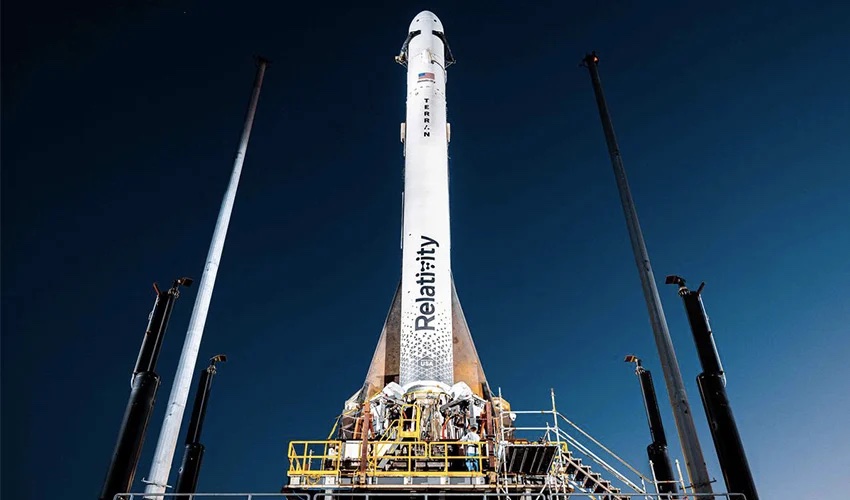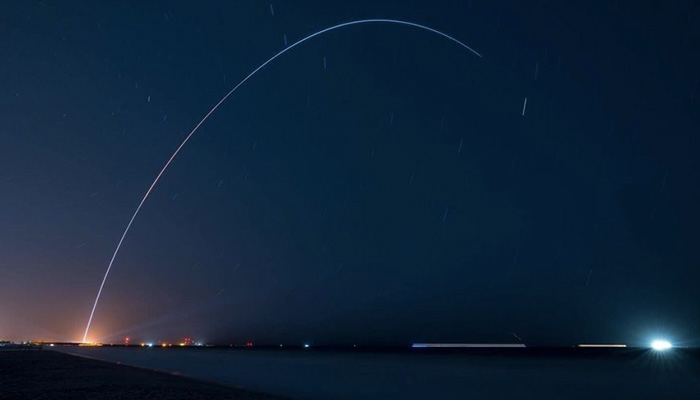Relativity Space’s Terran 1 Successfully Lifted Off But Did Not Reach Orbit

A few years ago, we introduced you to the Terran 1, Relativity Space’s almost entirely 3D printed rocket. Built using directed energy deposition (DED) and powder bed fusion, this spacecraft was an industry first. Moreover, according to the manufacturer, it is the tallest 3D printed metal structure ever built. The Terran 1 is initially intended to carry lightweight satellites into space. Now, it has reached its last stage as the rocket was able to takeoff on March 22nd from the LC-16 launch pad at the US Space Force facility in Cape Canaveral, Florida. Initially, a liftoff was scheduled for March 8. However, due to technical problems, bad weather and insufficient fuel pressure, its journey to space was delayed twice.
The mission nicknamed “GLHF” (for Good Luck, Have Fun) reached a milestone when the Terran 1 was able to lift off last night, at 11:30 pm US time. The rocket lit up the Florida sky for 3 minutes, before running out of power before reaching space orbit. That being said, the start did seem promising. The first stage of the rocket which is used for the thrust at the takeoff did its role and detached without complications once its fuel was dry. Following this stage, a motor intended to propel the remaining part did not ignite sufficiently, preventing the rocket from reaching orbit. Terran 1 launch director Clay Walker confirmed that there was an “anomaly” with the upper stage.

The Terran lifted off at 11:30 p.m. from Cape Canaveral (photo credit: Relativity Space)
A Big Step for Relativity Space and the Terran 1
Although the Terran 1 did not reach orbit, this first liftoff represents a significant advance for Relativity Space. Indeed, the Terran 1 succeeded in crossing the Max Q, the moment when the rocket passes the point of maximum atmospheric pressure during an orbital launch, a crucial point for Tim Ellis, the CEO of Relativity Space. Through this mission, the company wants to demonstrate the efficiency and reliability of their additive manufacturing process. It also mentioned that this launch was only a prototype, as no payload or satellite was placed inside the rocket. Following this “failure”, the company nevertheless stated that it would provide updates over the next few days to avoid encountering a similar problem on future launches.
Relativity Space’s plans are not limited to reaching space with the Terran 1, as the American company is already working on its successor, the Terran R. The latter is expected to be a 90% 3D-printed rocket, furthermore it will be reusable. According to Tim Ellis, it shows “an obvious evolution” compared to the Terran 1. It would be able to carry 20 times more payload than its predecessor, about 20 tons. If everything goes as planned, the Terran R should take off in 2024, and would serve as a major transport for the conquest of Mars.
What do you think of the Terran 1 take-off? Let us know in a comment below or on our LinkedIn, Facebook, and Twitter pages! Don’t forget to sign up for our free weekly Newsletter here, the latest 3D printing news straight to your inbox! You can also find all our videos on our YouTube channel.
*Cover Photo Credits: Relativity Space







